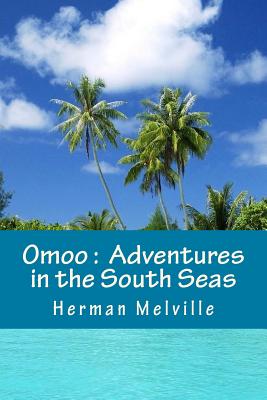You are here
Back to topOmoo: Adventures in the South Seas (Paperback)
Not Available
Description
Omoo: A Narrative of Adventures in the South Seas is the second book by American writer Herman Melville, first published in London in 1847, and a sequel to his first South Sea narrative Typee, also based on the author's experiences in the South Pacific. After leaving the island of Nuku Hiva, the main character ships aboard a whaling vessel that makes its way to Tahiti, after which there is a mutiny and the majority of the crew are imprisoned on Tahiti.In the Preface to Omoo, Melville claimed to have written "from simple recollection" strengthened by his retelling the story many times before family and friends. Yet a scholar working in the late 1930s discovered that Melville had not simply relied on his memory and went on to reveal a wealth of sources. Later, Melville scholar Harrison Hayford made a detailed study of these sources and, in the introduction to a 1969 edition of Omoo, summed up the author's practice: "He had altered facts and dates, elaborated events, assimilated foreign materials, invented episodes, and dramatized the printed experiences of others as his own. He had not plagiarized, merely, for he had always rewritten and nearly always improved the passages he appropriated." Hayford showed that this was a repetition of a process previously used in Typee, "first writing out the narrative based on his recollections and invention, then using source books to pad out the chapters he had already written and to supply the stuff of new chapters that he inserted at various points in the manuscript.
About the Author
Herman Melville[a] (August 1, 1819 - September 28, 1891) was an American novelist, short story writer, and poet of the American Renaissance period. His best known works include Typee (1846), a romantic account of his experiences in Polynesian life, and his whaling novel Moby-Dick (1851). His work was almost forgotten during his last thirty years. His writing draws on his experience at sea as a common sailor, exploration of literature and philosophy, and engagement in the contradictions of American society in a period of rapid change. He developed a complex, baroque style: the vocabulary is rich and original, a strong sense of rhythm infuses the elaborate sentences, the imagery is often mystical or ironic, and the abundance of allusion extends to Scripture, myth, philosophy, literature, and the visual arts. Born in New York City as the third child of a merchant in French dry goods, Melville's formal education ended abruptly after his father died in 1832, leaving the family in financial straits. Melville briefly became a schoolteacher before he took to sea in 1839 as a common sailor on a merchant ship. In 1840 he signed aboard the whaler Acushnet for his first whaling voyage, but jumped ship in the Marquesas Islands. After further adventures, he returned to Boston in 1844. His first book, Typee (1845), a highly romanticized account of his life among Polynesians, became such a best-seller that he worked up a sequel, Omoo (1847). These successes encouraged him to marry Elizabeth Shaw, of a prominent Boston family, but were hard to sustain. His first novel not based on his own experiences, Mardi (1849), is a sea narrative that develops into a philosophical allegory, but was not well received. Redburn (1849), a story of life on a merchant ship, and his 1850 expose of harsh life aboard a Man-of-War, White-Jacket yielded warmer reviews but not financial security.
